Carducci Spotlight: Emma Lesser / A Culture of Change: The Inherent Power of Restorative Justice to Transform Public Schoolyards
Emma recently completed an MLA thesis entitled: “A Culture of Change: The Inherent Power of Restorative Justice to Transform Public Schoolyards” that explores how landscape architects can co-create safe and healing spaces in Oakland's public schoolyards. Her thesis topic stems from a deeply personal conviction that childhood learning environments play a crucial and protective part in a child’s experience of trauma. She first sets the scene with a review of the psychology and physiology of ACEs (Adverse Childhood Experiences), and how they are currently addressed by schools, focusing on restorative justice (RJ). She then investigates the current state of America's public-school spaces, their effects on students, and the politics and logic behind their designs. She presents landscape precedents that were designed with social emotional learning in mind, and their theoretical bases. Few of these precedents include schoolyards, particularly public ones, as they have only recently become the focus of landscape architects. Over the past several decades, the green schoolyard movement has grown to address heat and pollution, stormwater, community access, ecological learning, and even experimental or 'risky' play. Emma proposes restorative justice as a worthy rationale for schoolyard transformation. In doing so, she intends to not only push landscape architects towards working in support of social programs, but to also promote a more emotionally compelling rationale for schoolyard changes—and one that takes advantage of existing school social infrastructure. She concludes that RJ programming can indicate a school “culture of change” that would both more readily allow for and be supported by built environmental changes.
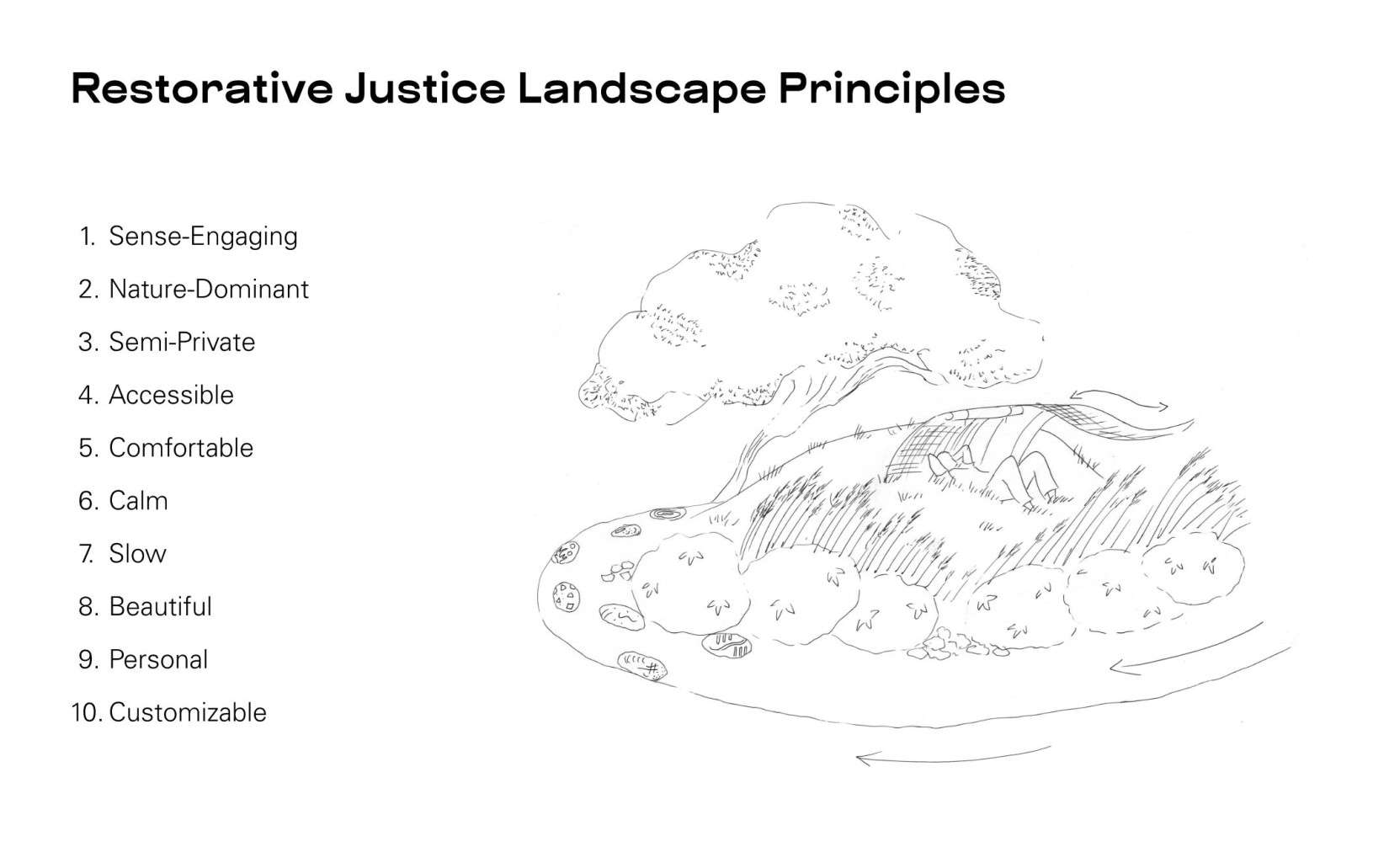
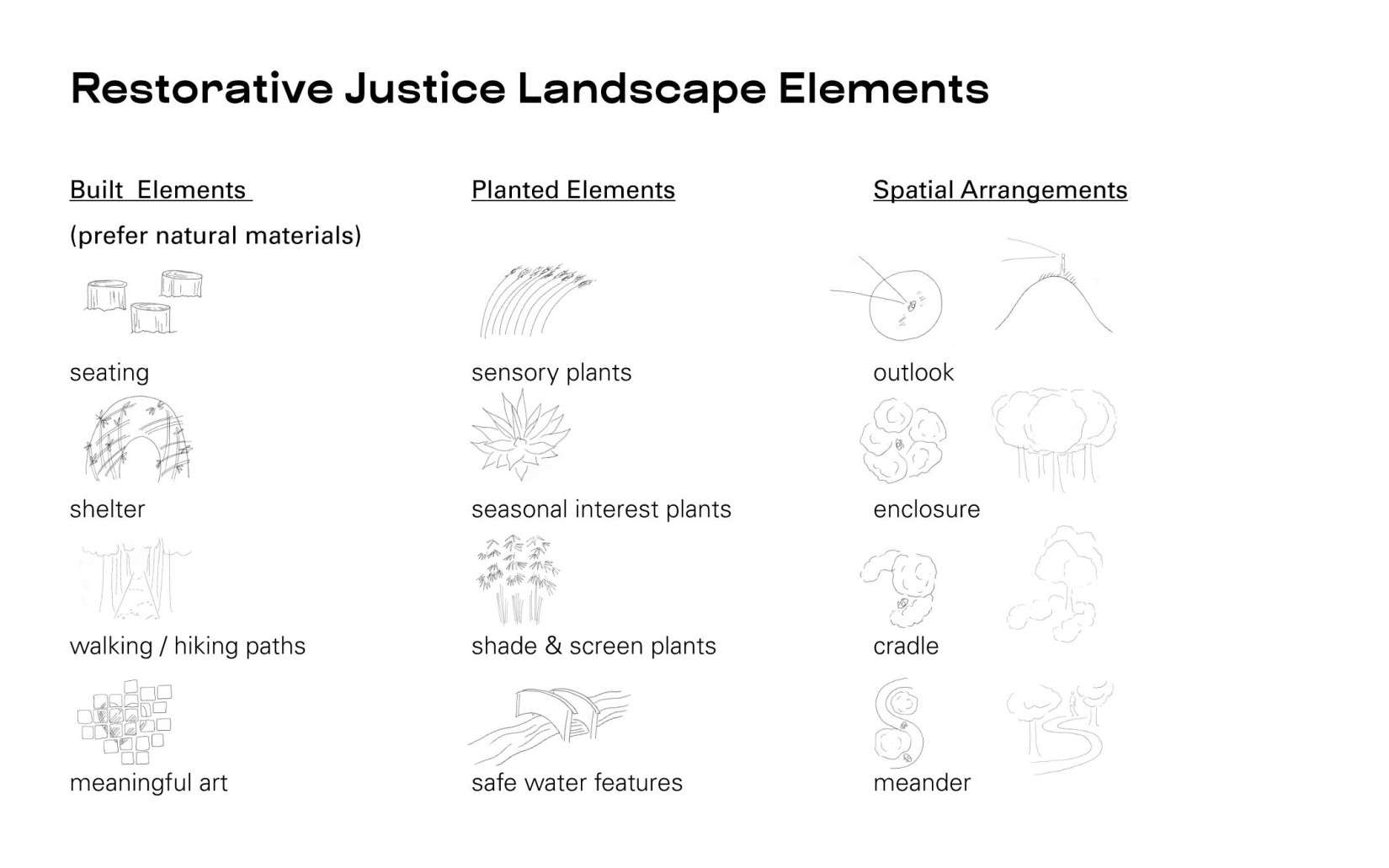
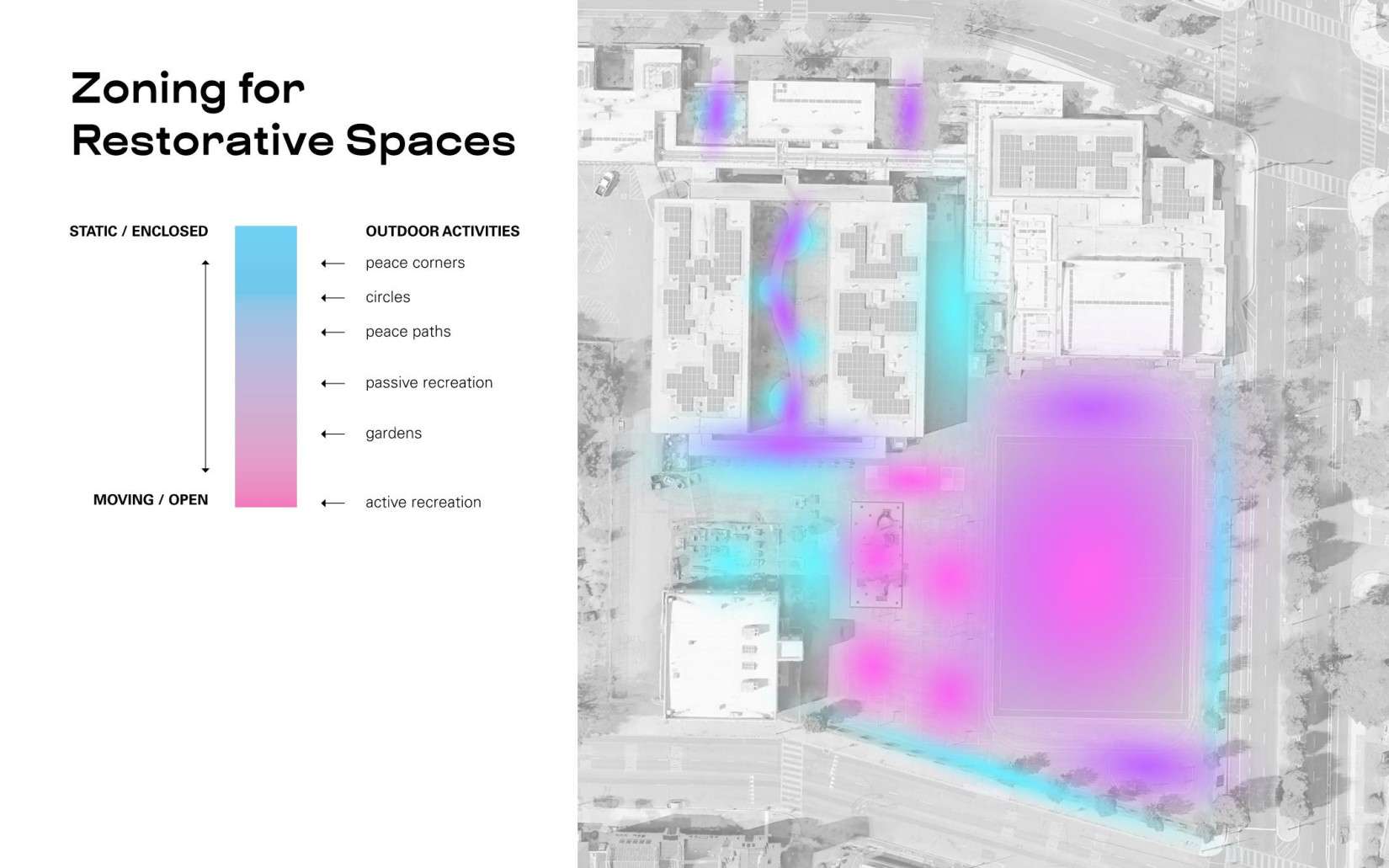
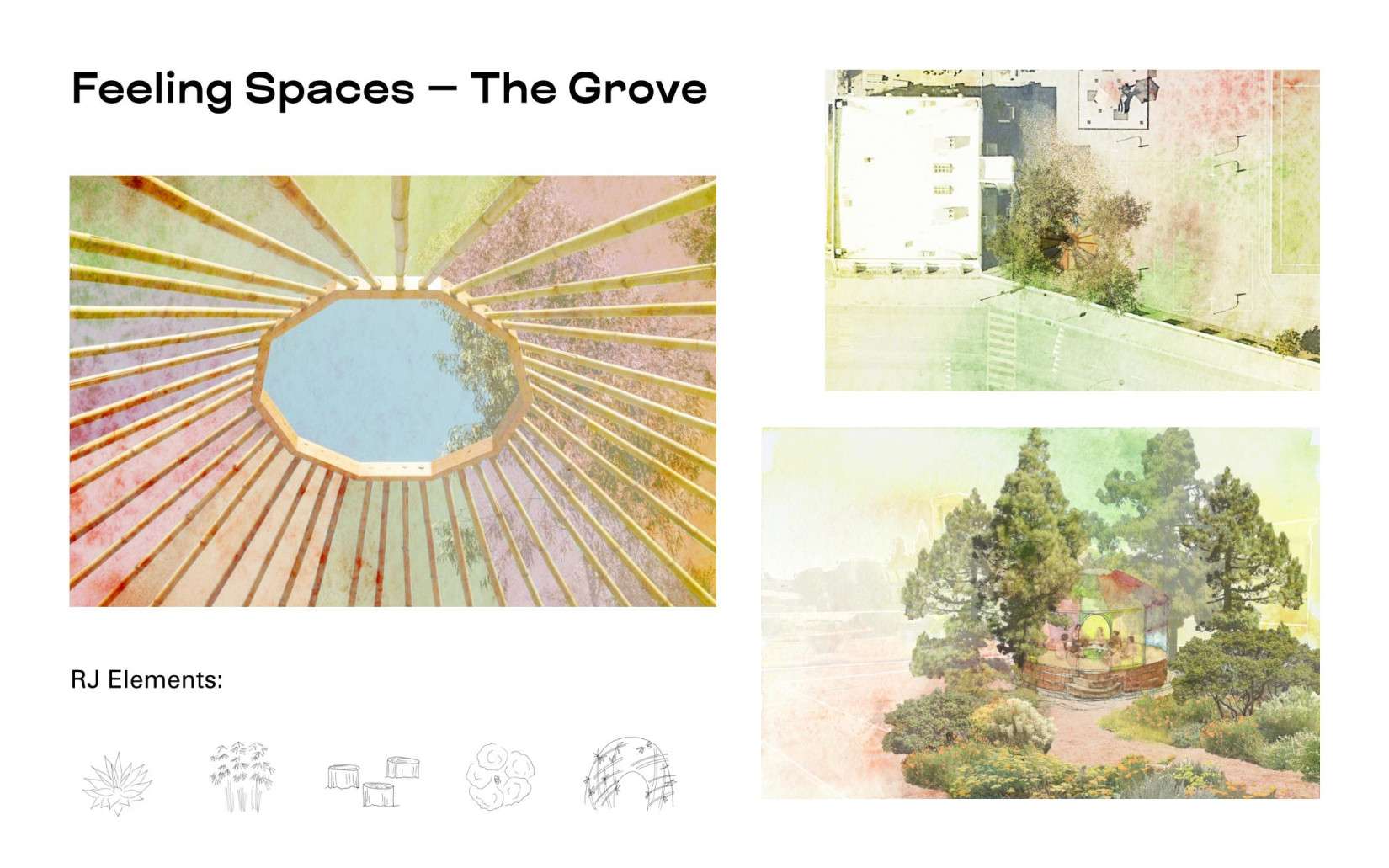
"Restorative landscapes might serve as "compatible" feeling spaces: where one's environment is compatible with one's emotional state. In these contexts I demonstrate how my RJ landscape principles and elements can work together. In "the grove," loneliness can be met with connection under the warm colors and diffused light of a fabric-lined structure. Evergreen trees provide further shade, seasonal interest and greater enclosure of the space."
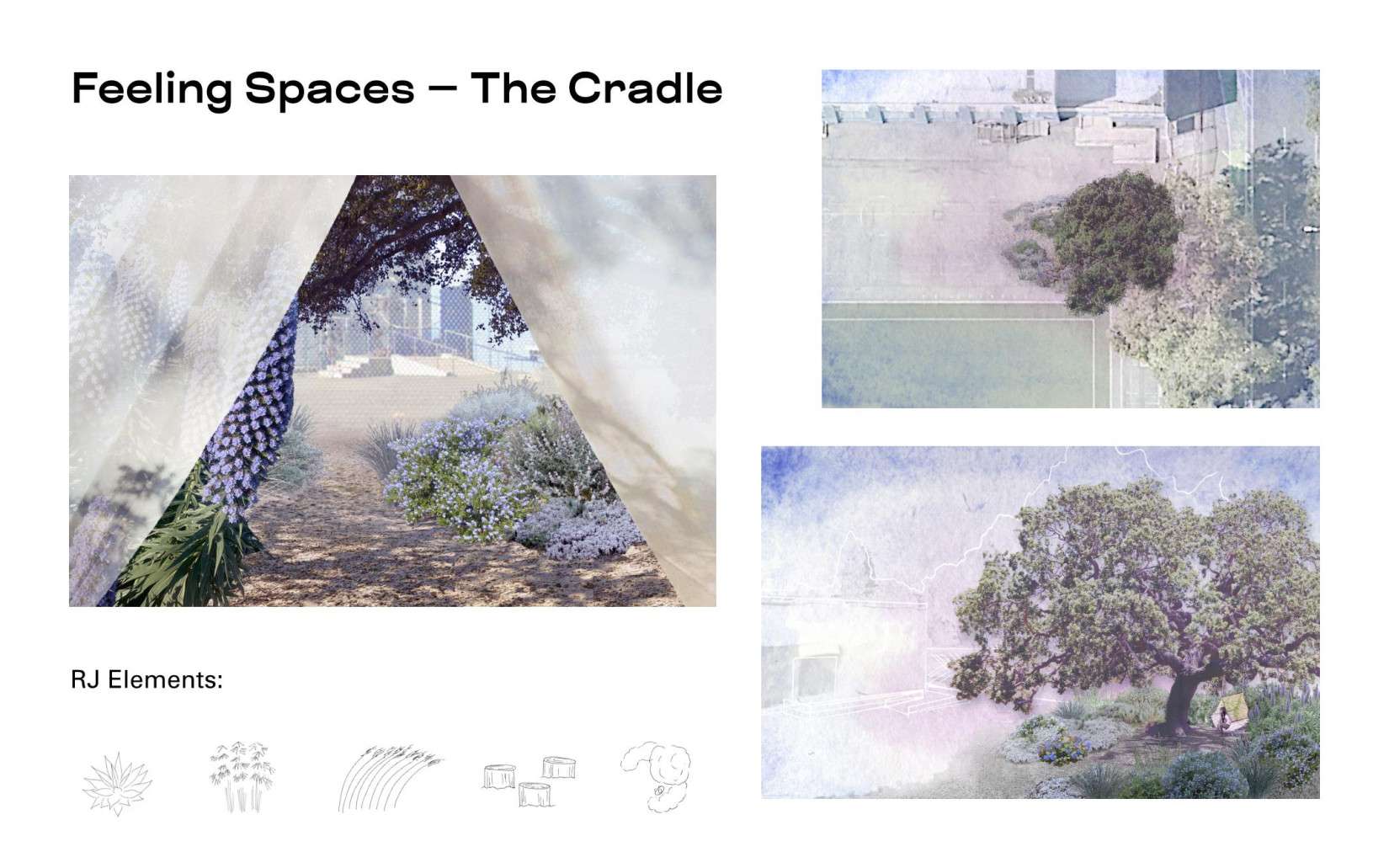
Feature / On the Boards / People